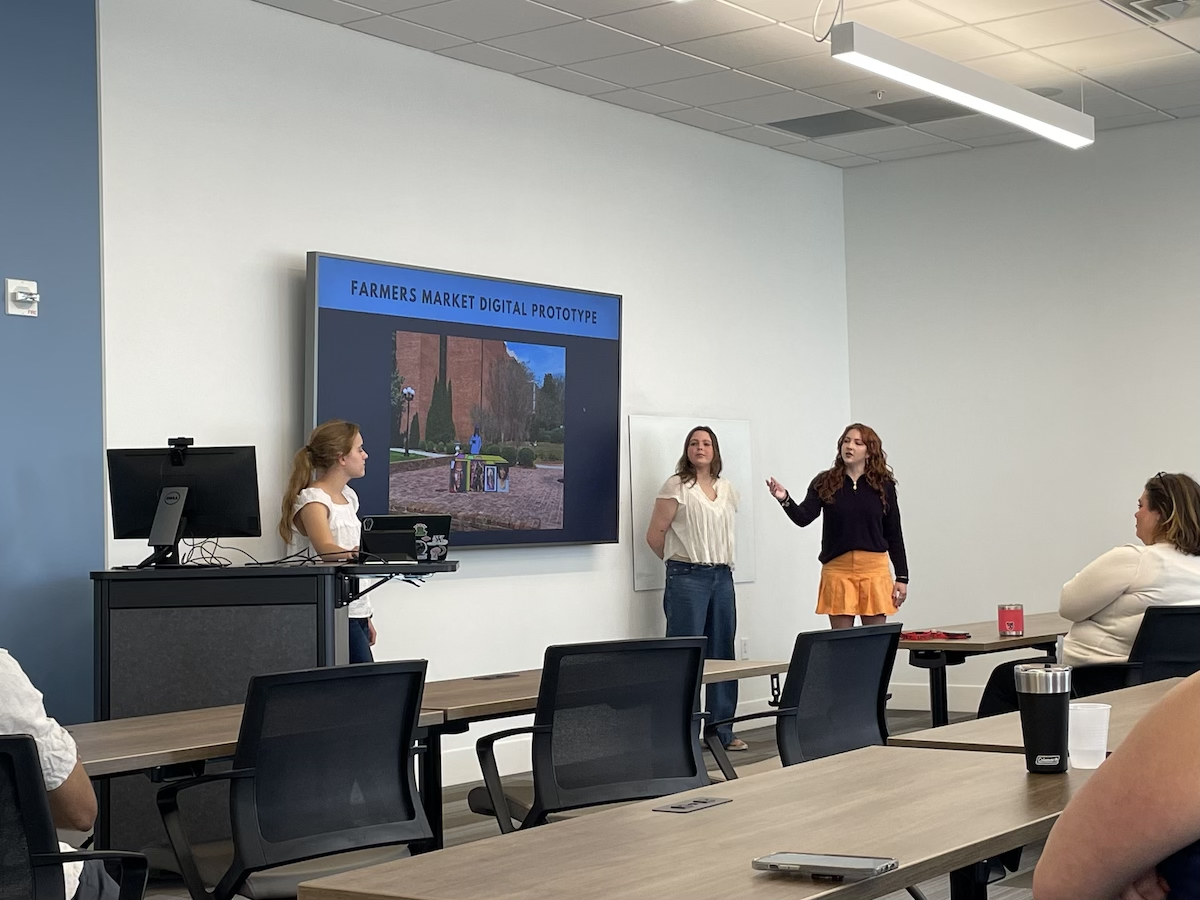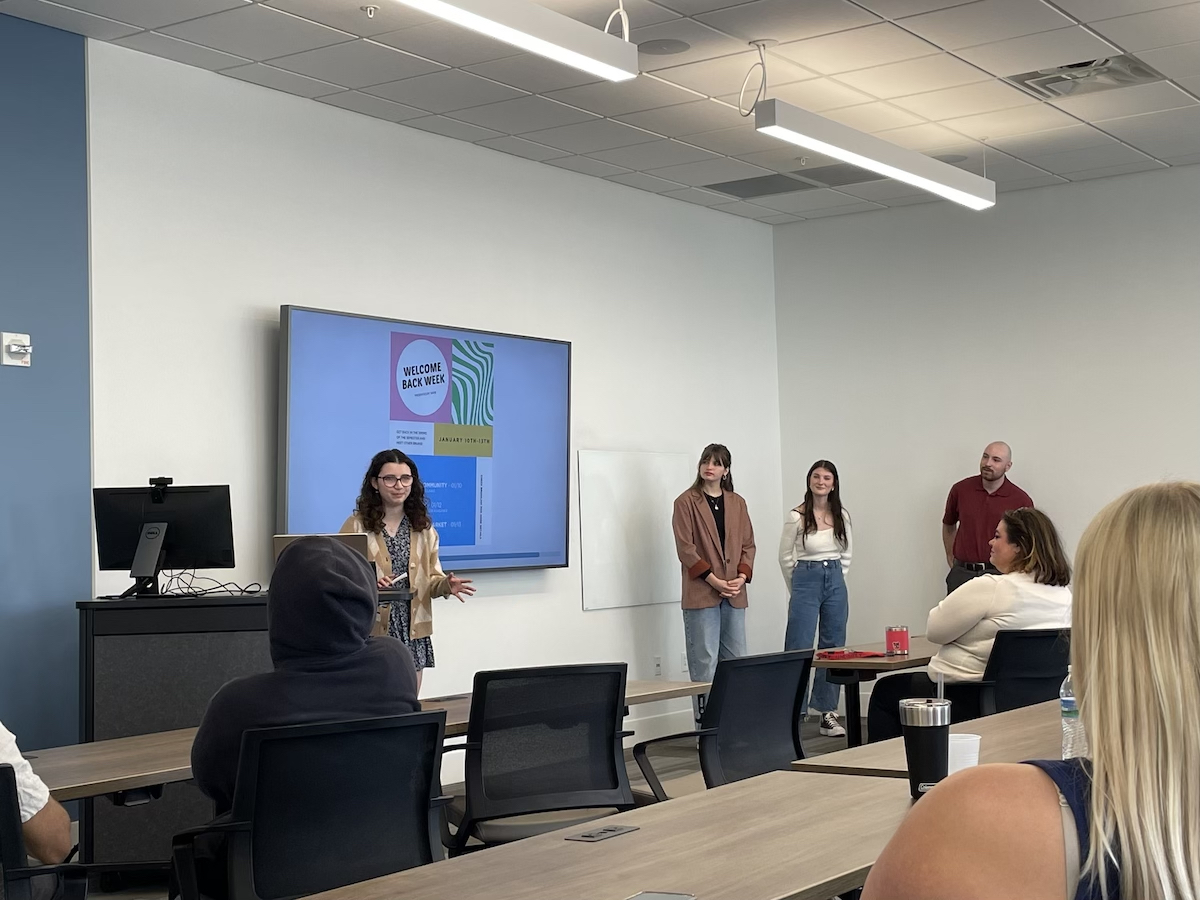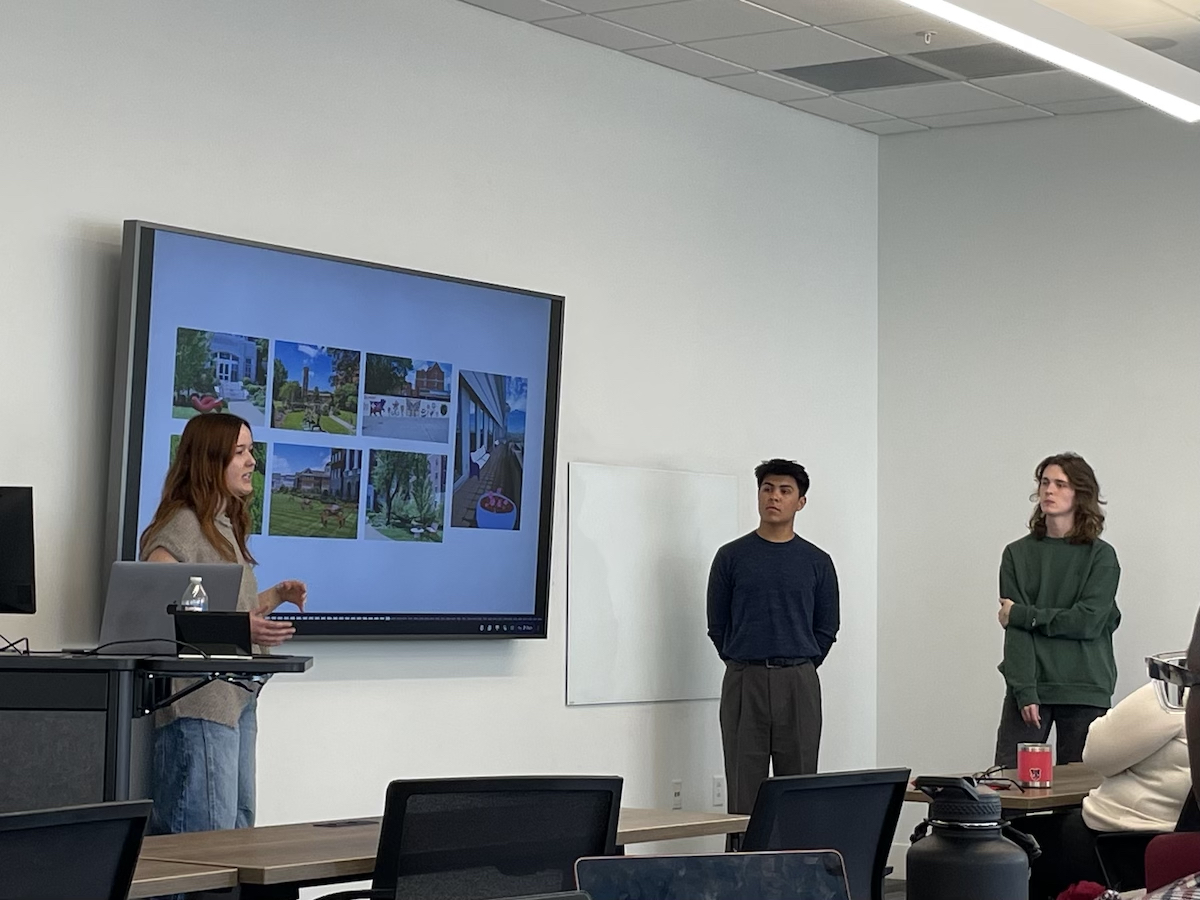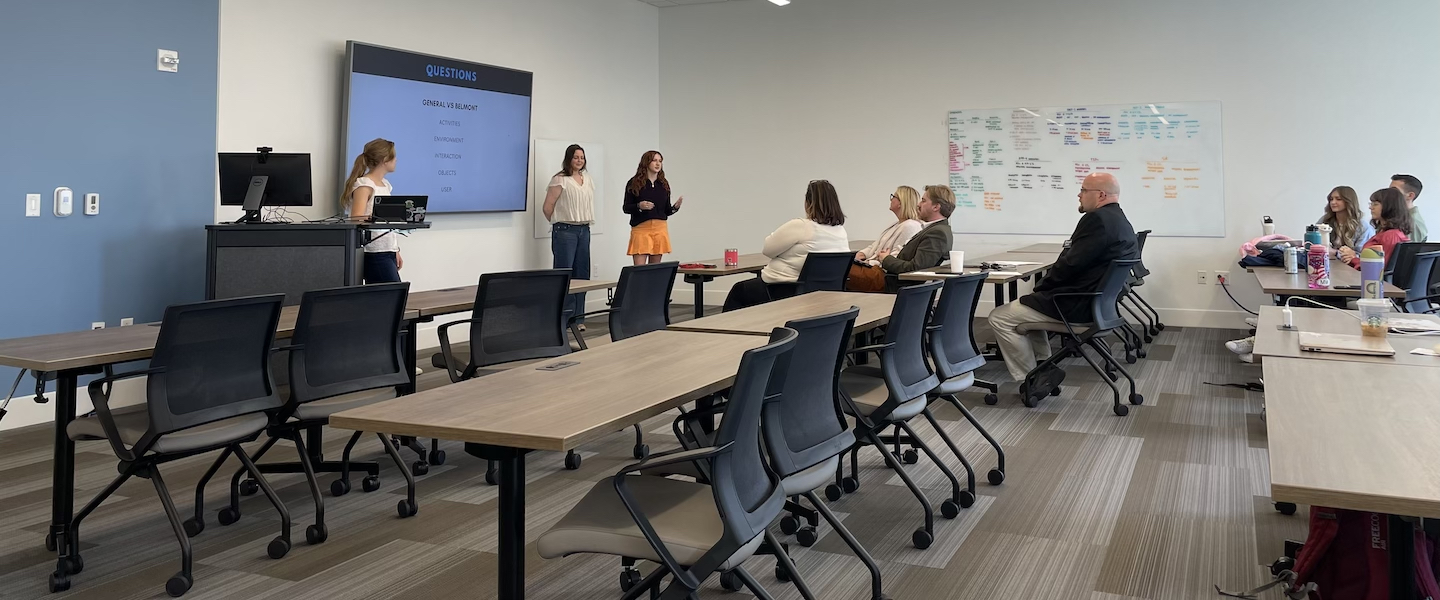 Assistant Professor of Graphic Design Dale Addy’s design empathy class focused this spring on using their lessons learned from the design thinking and empathy process to improve student mental health around Belmont’s campus. The students conducted thorough research through surveys and interviews of their peers to understand core issues and pain points before thinking through creative solutions.
Assistant Professor of Graphic Design Dale Addy’s design empathy class focused this spring on using their lessons learned from the design thinking and empathy process to improve student mental health around Belmont’s campus. The students conducted thorough research through surveys and interviews of their peers to understand core issues and pain points before thinking through creative solutions.
One major finding highlighted by student Grace McNamara was that nearly half of the students her group talked to indicated that they do not feel adequately supported in their mental health. “This is the statistic that we wanted to focus on throughout this process,” she said. “Because we know this is not the heart of Belmont...we want to focus on bridging that gap between where students are and what they're feeling, and where Belmont staff and faculty are."
 The qualitative interviews revealed several common themes - lack of awareness about existing resources, need for more physical community spaces and challenges with managing the University's "WELL-Core" requirement on top of balancing other priorities as a college a student.
The qualitative interviews revealed several common themes - lack of awareness about existing resources, need for more physical community spaces and challenges with managing the University's "WELL-Core" requirement on top of balancing other priorities as a college a student.
Student groups then ideated potential solutions, with many focusing on ways to help students approach WELL-Core with improved convenience and time management systems. As student Kaleb Cruz stated, "We know WELL-Core is designed to help shape us into well-rounded students, but we wanted to focus on how we can make it more engaging and have students want to go and get something out of it."
Cruz’s group proposed "Mind Body Soul" - a consistent monthly event series rotated across different colleges, combining hobby-like activities related to that college's expertise with personal wellness elements like meditation, counseling representatives and nutritious food. Cruz explained, "There's something about consistency and routine that makes students feel a lot more comfortable and more willing to go to events."

Other proposed ideas included a campus scavenger hunt to raise awareness of resources, improved outdoor spaces for relaxation and socialization, a streamlined app for scheduling/tracking WELL-Core events, and mechanisms for better student-faculty communication, such as a mid-semester course evaluation where students could provide anonymous feedback on how their class was going and how their faculty could better support students.
The groups created prototypes of their ideas at various fidelity levels and received feedback from their peers.
“I think it's really encouraging that so many of our groups have the same ideas,” Cruz summarized. "We thought the best route was to focus more on the things that contribute to strong mental health, which would be community, physical spaces and awareness of campus offerings."

By applying design thinking and empathy, the students aimed to bridge the gaps in mental health support and develop creative solutions tailored to the voiced needs of Belmont's students.
With campus leaders in attendance at the group’s final presentations, perhaps some of their ideas will be put into action.

